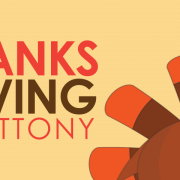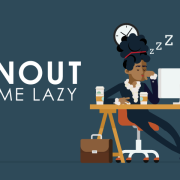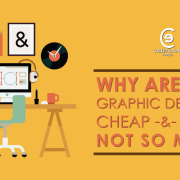When I went through a tough time with my design business, I decided to supplement my income by picking up graphic design contract work. Working graphic design contract jobs was not something that was new to me. I spent four years working for 3M as a designer in Atlanta…as a graphic design contractor. Working as a contractor and for such a long period of time, gave me a bit of a confidence boost to launch into my freelance career on a full-time basis.
A lot of graphic designers do not necessarily enjoy graphic design contract work, but I do. I think it depends on your reasons for doing so.
Graphic design contract work can be a launching point to start a career in graphic design; to gain experience in the field while studying graphic design in college; to fill in gaps during periods of unemployment; to land a full-time position or in my case, fill in gaps when freelance work is a bit slow.
If you are looking for a full-time, permanent position it can be a good starting point, but can be a bit frustrating. There tends to be more short-term and long-term open-ended contract jobs than there are full-time, permanent placements. At least that seems to be the case here in Atlanta.
If you are not looking for full-time, permanent work it can be profitable and sometimes a bit fun. I like working as a graphic design contractor for the following reasons:
Change of Scenery
As a freelancer, I work out of my home office. Everyday I see the same four walls. I occasionally re-decorate my space…but it’s still those same four walls. #boring
The first graphic design contract gig I did since I started working as a full-time, freelancer, I literally told the client, “wow. It’s really nice to see something other than my same four walls!” Being away from my home office and in a new work environment, felt like I was on a work field trip.
I know a lot of freelancers that work out of coffee shops or co-working spaces for this reason, but I have never really been able to do that and still be productive. I think for me, being in a structured environment like when I am on a contract gig is the difference. It’s like when I went back to school for my Master’s degree. I knew I couldn’t do it online and needed a brick and mortar program because I needed the structure that comes with it.
I also find it interesting to see how different companies setup and design their work spaces…weird, I know. These “work field trips” are like an interior office space design tour that I am being paid to be on.
Seeing What Others are Doing
Speaking of seeing how others are designing their work spaces, I also like seeing how they operate. What are the business processes and workflows they are using or have developed? Seeing what’s going on in my field in this regard first hand and in different business types and sizes is invaluable.
During my time so far doing graphic design contract work, I have actually adopted a few new processes and systems for my business that I observed to be useful. I have also affirmed that a few of the processes I already use are good and need to remain in place.
Working as a freelancer and from home, keeps me in a bit of a bubble. Doing contract work, takes me outside of that bubble and allows me to see new ways and perspectives that can benefit me with my business.
Finding Out How I Measure Up
That bubble that I am wrapped up in as a freelancer that works from home and often by myself…yeah, it keeps me from seeing the reality of where I really am from a skill and career level. This is because I have no co-workers. There is no one for me to make a direct comparison to from a working level.
I can browse portfolios online and look at work done by others, but there is something more that you can learn to make that comparison, by knowing and talking to those same people.
Before my contract Jr. Art Director gig with NCR, I thought I had the skill set necessary to do the job, but I didn’t know I did for sure until I landed the gig and started working. I’ve done Art Direction work for clients and I have Art Directed and project managed projects, when I have sub-contracted some of my client work. However, I did not feel like I had “officially” been an Art Director until I took on that contract position.
Now, I am o-ffic-ial. 🙂


Adding to my Skill Set
Working contract has also allowed me to add to my skill set in a couple of ways. One, it has provided a little extra income that I can now devote towards paying for classes, training courses, etc, to continuously stay current in my field.
Two, opportunities sometimes present themselves on contract design jobs that challenge your current skill set. For example, while at NCR, I worked on a project that came with a request to make an icon font based on Font Awesome. I’ve never created a font before, but I was familiar with Font Awesome from my freelance web design work.
I told the client that I would do some research and let them know if it was something I could do. After researching I determined that I could and I did. That is something that I don’t believe would have happened with my freelance business. I believe I would have turned that request down.
Now I can say that I know how to create an icon font…or I at least know a way to do so!
Hermit Prevention
I keep mentioning how I work from home, have no co-workers and see the same four walls day after day. If I am not careful, this could potentially lead to me becoming a full-fledged hermit! I’m also an introvert, so it can be a bit difficult to get me out and socializing from a personal perspective.
Working graphic design contract jobs, gets me out of the house and around people.
Enough said.
Easy Money
Because I prefer to take on short-term or part-time graphic design contract work, the work is not normally super labor intensive or has a tendency to be more production-based with templates and brand guideline restrictions. A lot of designers find this type of work to be grueling or less desirable.
I see it as easy money. I also see it as a way to stay sharp with skills that are not directly related to creativity. If you don’t know the production side of things, you can easily conceptualize something that cannot be easily produced or produced within your client’s budget. Doing production work keeps you sharp and knowledgeable in that regard.
It may not be “glorious,” but it’s necessary.
If you are a freelance creative professional, don’t be afraid to pick up contract work through a creative staffing agency. You can still freelance, especially if you only take on short-term or part-time assignments. It’s a way to learn and grow, all while making dough. Hey, I just rhymed! I should become a rapper. 🙂
Colleen Eakins is a dynamic and creative individual that possess a knack for great design. With over 15 years of experience in the field of graphic design, Colleen is able to effectively brand her clients with great design pieces. Her motto is: “Anyone can make a pretty picture, but is it effective? Will it make your customer buy your product or use your services? My design tries to answer with a YES!”







